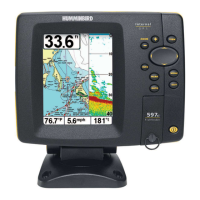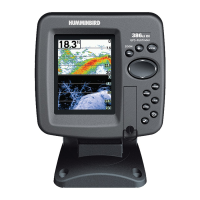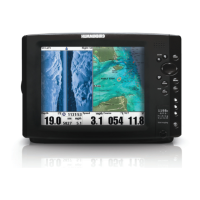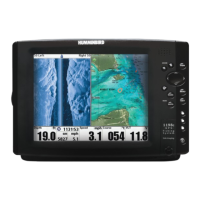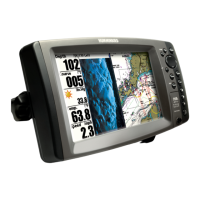144
Beam (Sonar Beam) The wide, cone-shaped projection of sound waves formed as
sound travels underwater. See Cone Angle.
Bottom Contour The profile of the bottom graphed to the display as the depth
changes.
Bottom Hardness The density (or composition) of the bottom. Varying levels of
hardness can be determined by interpreting the “thickness“ of the main sonar return.
Hard returns appear thin and black, softer returns appear thicker and less black. It is
important to note that a sonar return from a sloping bottom can have the appearance
of a softer bottom.
Cavitation The effect of air bubbles created as the propeller rotates and the boat
moves through the water.
Cone Angle The angular measurement of the sonar beam at a specific dB down
point (i.e. -10 dB). See
dB Down Point.
Dead Zone The area of the sonar beam that receives the sonar signal after the main
bottom return. Fish and other objects close to the bottom that fall within the dead zone
will probably not be visible in the sonar beam. Precision sonar beams, such as the
Humminbird® 20° beam, have a smaller dead zone than wider sonar beams.
Decibel The measurement for sound pressure level, or “intensity”of the sonar return.
See
dB Down Point.
dB Down Point The standard decibel level at which the sonar cone angle is
measured, and is written as “@ -10 dB” or “@ -3 dB“. Measurements at smaller down
points (bigger negative numbers) indicate that the less intensive sonar signals are
being used for the measurement.
Display, FSTN (Film Super-Twist Nematic) FSTN is a monochrome display
technology characterized by black, high-contrast pixels. All monochrome fixed mount
Humminbird® products use FSTN technology.
Frequency A measure of the number of sound wave cycles per second of a sound
impulse transmitted underwater. A typical frequency for fishfinders is 200 kHz, which
offers a good balance of performance under many conditions. Lower frequencies, such
as 50 kHz, are capable of penetrating to greater depths, but with less resolution.
Higher frequencies, such as 455 kHz, offer greater resolution, but are limited in depth
performance. Humminbird® uses a variety of frequencies that are optimized for specific
applications.
Grayscale The use of varying shades of gray to represent the strength of the sonar
signal on the display. Traditionally, the strongest sonar signals are represented in
black, and progressively weaker signals are represented in progressively lighter shades
of gray.
Noise The unintentional, external sound waves that interfere with the optimal
operation of sonar. Noise appears as random “dots“ on the display and is caused by a
variety of sources. Many Humminbird® products have a Noise Filter menu setting that
allows the user to clear the screen of noise that is difficult to eliminate (also, see
Troubleshooting).
Pixels The “picture elements“, or small square blocks, that make up the image on the
LCD. Measured as a vertical by horizontal number (i.e. 640V x 320H), this key
specification typically indicates the quality of resolution. In fishfinders, the total
resolution (vertical multiplied by horizontal) is often less important than the “Vertical
Pixel“ resolution because a greater number of vertical pixels provide finer resolution of
targets detected by sonar. Sonar information on the horizontal axis can vary greatly,
depending on boat speed and the Chart Speed setting.
Glossary - Sonar Terms
Glossary Sonar Terms

